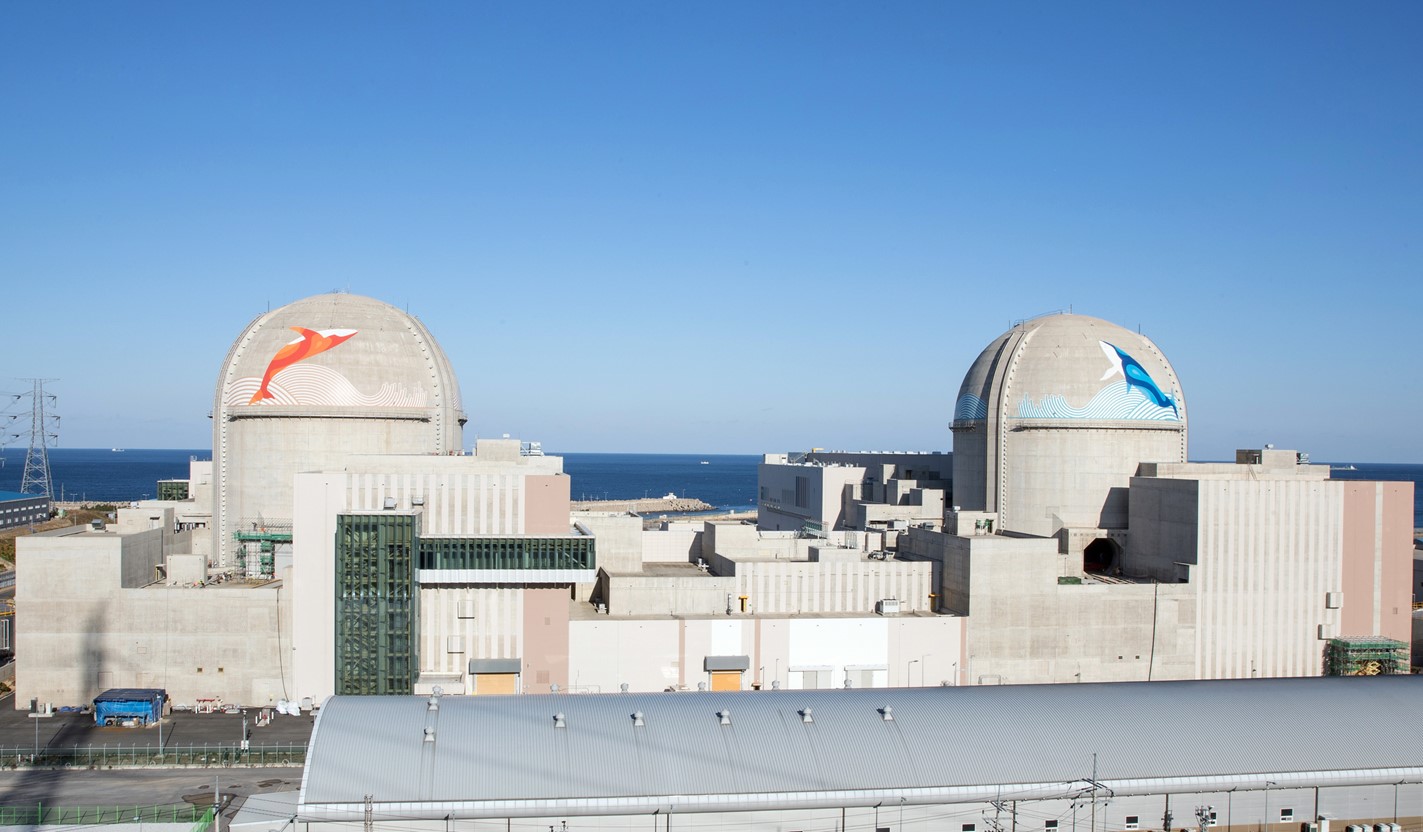Borssele nuclear power station in the Netherlands. (Photo: EPZ)
While it currently has the lowest installed nuclear capacity of any nuclear-powered nation in Europe with one 482-MWe pressurized water reactor at Borssele, the Netherlands has in recent years been looking to move up in the rankings.
Kerekes leans on the original vehicle recognition system hardware, which required the large solar panels behind him to power it. Kerekes holds the current version, which has been greatly reduced in size from its predecessor. (Photo: Carlos Jones/DOE)
A technology developed to prevent poachers from killing endangered African species is being adapted by researchers at Oak Ridge National Laboratory to recognize individual motor vehicles. The capability could help secure checkpoints and track nuclear materials, among other uses.
A radiological control technician checks radiation readings on waste containers at WIPP. (Photo: WIPP)
The New Mexico Environment Department (NMED) is adding several conditions to the operating permit for the Department of Energy’s Waste Isolation Pilot Plant (WIPP) near Carlsbad, N.M. The permit changes, which would prioritize the disposal of transuranic (TRU) waste generated in the state and limit the repository’s capacity, are contained in a fact sheet the NMED.
The target chamber of LLNL’s NIF, where 192 laser beams delivered more than 2 million joules of ultraviolet energy to a tiny fuel pellet to create fusion ignition on December 5, 2022.
It’s official: Early in the morning on December 5 at Lawrence Livermore National Laboratory’s National Ignition Facility (NIF), the laser-triggered implosion of a meticulously engineered capsule of deuterium and tritium about the size of a peppercorn yielded, for the first time on Earth, more energy from a fusion reaction than was delivered to the capsule. The input of 2.05 megajoules (MJ) to the target heated the diamond-shelled, spherical capsule to over 3 million degrees Celsius and yielded 3.15 MJ of fusion energy output. The achievement was announced earlier today by officials and scientists representing the Department of Energy and its National Nuclear Security Administration, the White House, and LLNL during a livestreamed event.
A tanker holding 6200 gallons of leachate unloads at a backup load-in station at the Hanford Site’s ETF. (Photo: DOE)
Construction of a backup load-in station has been completed at the Hanford Site’s Effluent Treatment Facility (ETF) in Washington state.
“We broke ground on the backup facility about a year ago,” said Rob Wood, project manager for Washington River Protection Solutions, the Department of Energy’s tank operations contractor at the site. “I am proud of the team for completing this portion of the load-in expansion project and doing it safely. In phase two, expansion of the main load-in station will prepare us for 24/7 operations on the Hanford Site.”
Watch a time-lapse video of the backup load-in station construction here.
South Korea’s Shin-Hanul-1 (on left) and -2. (Photo: KHNP)
Unit 1 at South Korea’s Shin-Hanul nuclear power plant entered commercial operation last week, Korea Hydro & Nuclear Power has announced. The 1,340-MWe APR-1400—designed by KHNP and parent firm Korea Electric Power Company—achieved initial criticality on May 22 of this year and was connected to the grid on June 9.
A figure from the “Multistep Coulomb excitation of 64Ni” that shows the time-of-flight difference between the projectile and target recoils as a function of scattering angle measured with the CHICO2 detector. A clear separation between the Ni-64 (bottom) and Pb-208 (top) ions is observed. (Credit: Physical Review C/American Physical Society)
A study published recently in the American Physical Society journal Physical Review C reveals new findings about the strong nuclear force, the mysterious fundamental force that holds together the protons and neutrons of the atomic nucleus. Experiments conducted at Argonne National Laboratory have shown how the round, heavy nuclei of the nickel-64 isotope (containing 28 protons and 36 neutrons, making it the heaviest stable Ni isotope) changed into one of two shapes—either like a doorknob or a football—depending on the amount of energy exerted on it. A summary of the research on the Phys.org website compares the nuclei shape change to popcorn kernels changing shape when heated in a microwave.
Vogtle-4 in October. (Photo: Georgia Power)
Cold hydro testing of Unit 4 at the Vogtle plant’s nuclear expansion site has been completed, Georgia Power announced on December 7.
A replica of the chianti bottle signed by many of those present on December 2, 1942, alongside the image of a document signed 20 years later by most of those present (Photo: ANL); a portion of a photo of CP-1 scientists taken on December 2, 1946 (Photo: ANL); January 1993 Nuclear News coverage of CP-1 50th anniversary commemorations during the 1992 ANS Winter Meeting.
Nuclear Newswire is back with the final #ThrowbackThursday post honoring the 80th anniversary of Chicago Pile-1 with offerings from past issues of Nuclear News. On November 17, we took a look at the lead-up to the first controlled nuclear chain reaction and on December 1, the events of December 2, 1942, the day a self-sustaining nuclear fission reaction was created and controlled inside a pile of graphite and uranium assembled on a squash court at the University of Chicago’s Stagg Field.

















